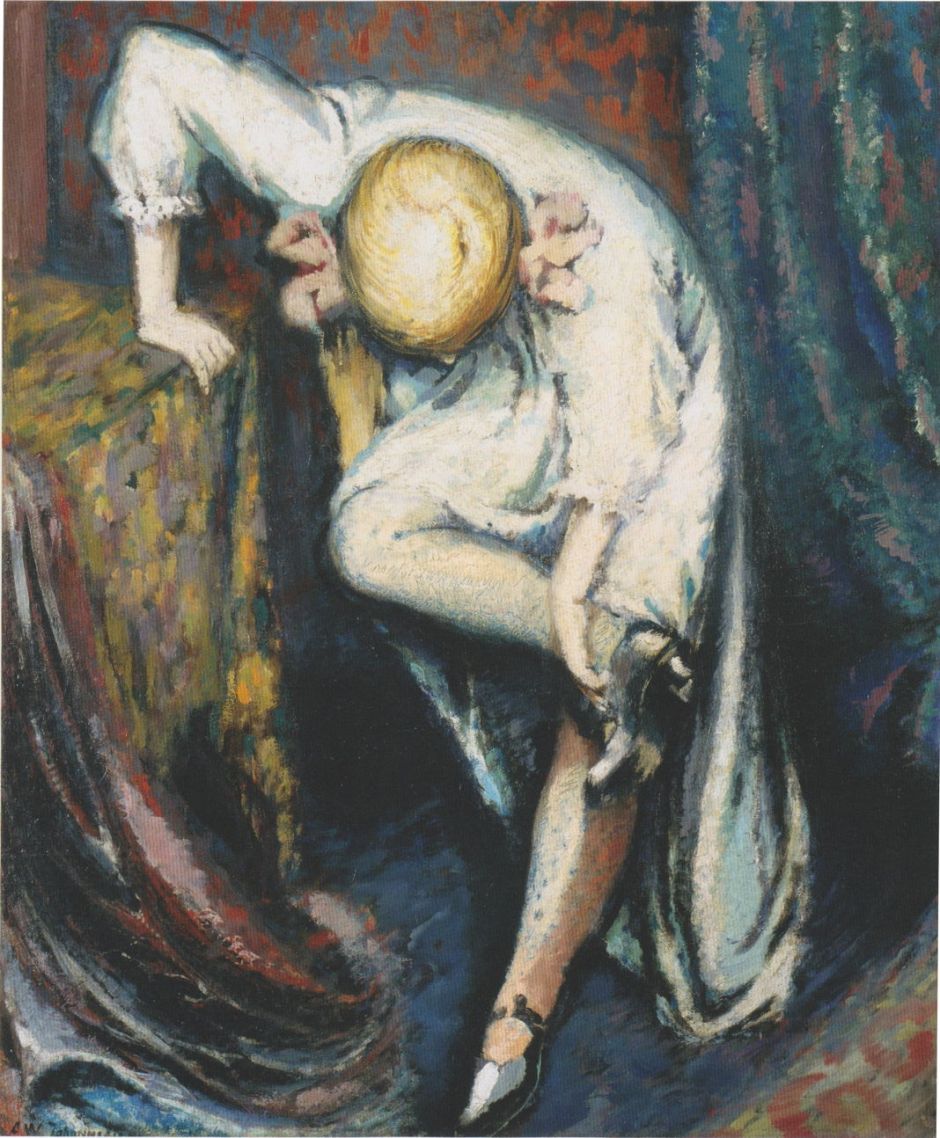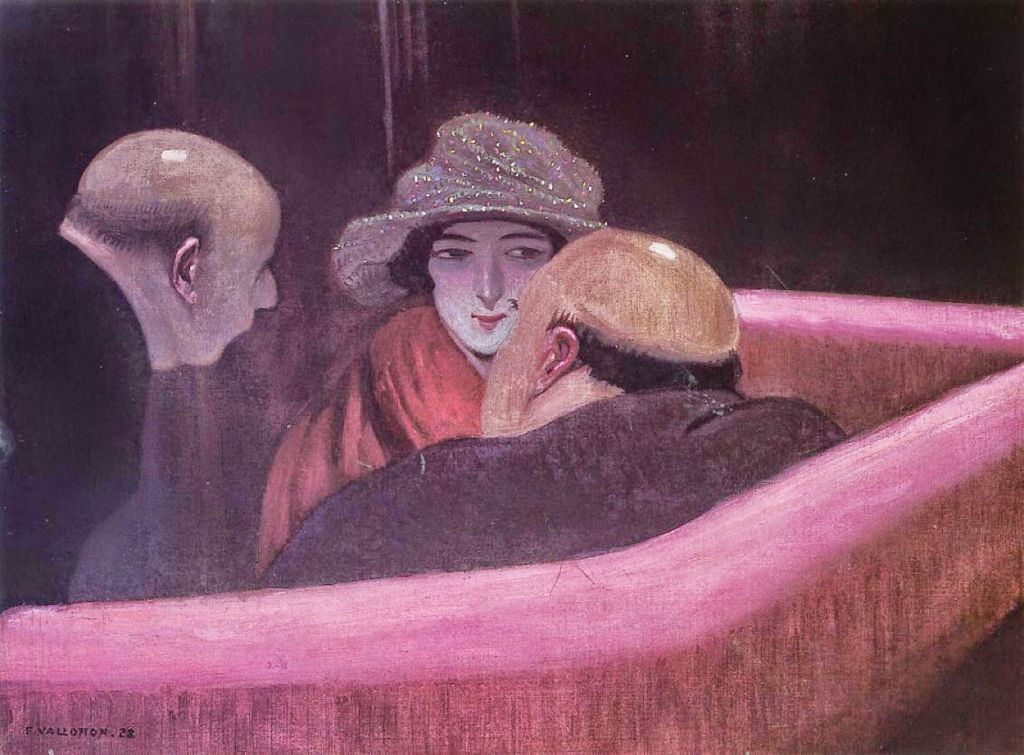Before the end of each year, I like to look back at those paintings completed a century ago. This is the first in a series of four articles showing some of the finest and most interesting paintings with completion dates in 1922. In this article, they’re predominantly narrative works; the next will show other figurative paintings and portraits, then I’ll conclude with two covering landscapes and still life.
The year 1922 saw further healing of the scars inflicted around the world by the Great (First World) War, and the influenza pandemic that followed it. With so many men dead or disabled as a result, women still formed much of the labour force, particularly in the country. There were still conflicts, though, including the brief Irish Civil War, while that between Turkey and Greece ended.
Both Stalin and Mussolini rose to power: the former being appointed General Secretary of the Central Committee of the Soviet Communist Party, the latter being elected Prime Minister of Italy before becoming dictator. Banting and Best successfully treated the first diabetic using newly-discovered insulin. The Hollywood Bowl and Rose Bowl both opened, and the BBC was formed. Tutankhamun’s tomb was also discovered.
My first work is perhaps the most remarkable history painting of the year, and merits reading in depth.

The title of Eleanor Fortescue-Brickdale’s painting reveals its key figures: Botticelli’s Studio: The first visit of Simonetta presented by Giulio and Lorenzo de Medici. Sandro Botticelli stands at the left, in front of an exquisite tondo he is working on. Bowing to him at the centre is Giuliano de’ Medici, who is accompanied by Simonetta Vespucci, wearing the green dress. Behind her is Lorenzo de’ Medici, also known as Lorenzo the Magnificent, and behind him are Giovanna Tornabuoni and her attendants. The view through the window is of the Palazzo Vecchio in the centre of Florence, Italy.
These figures weren’t painted from models or imagination, but each is based on contemporary sources.
Giovanna Tornabuoni comes from a detail of Domenico Ghirlandaio’s painting The Visitation (c 1488) in the Tornabuoni Chapel of the Church of Santa Maria Novella in Florence. Giovanna was born as Giovanna degli Albizzi in 1468, married Lorenzo Tornabuoni in 1486 when she was about eighteen, and died in childbirth two years later in 1488. She is here accompanied by her maid, and her nurse.
Lorenzo de’ Medici (1449-1492) appears in Girolamo Macchietti’s undated portrait of Lorenzo the Magnificent. Lorenzo was born in 1449 into the banking family, the grandson of Cosimo de’ Medici, one of the wealthiest and most powerful people in Europe. He was groomed for power, and became the de facto ruler of the Florentine Republic when his father died in 1469. He survived an attack in the Cathedral of Santa Maria del Fiore on Easter Sunday 1478, in which his brother Giuliano was stabbed to death. This led to his excommunication, and invasion by forces of the King of Naples. He resolved that, and died in 1492, when he was forty-three.
It was Sandro Botticelli who painted the reference Portrait of Giuliano de’ Medici in about 1475. Giuliano was born in 1453, younger brother and co-ruler of the Florentine Republic with Lorenzo. He was assassinated in the attack in the cathedral on Easter Sunday 1478, dying at the age of twenty-five. Although he never married, an illegitimate son of his went on to become Pope Clement VII.
The painting shown in progress is Botticelli’s Madonna of the Magnificat, which is believed to have been completed in 1483. It shows the Virgin Mary being crowned by a pair of angels, writing down the start of the Magnificat in a book, and holding a pomegranate in her left hand. It has also been interpreted as a family portrait of the de’ Medicis, in which the Virgin is Lucrezia Tornabuoni, the mother of Lorenzo and Giuliano de’ Medici, who are the angels. I believe that Lucrezia was one of Giovanna Tornabuoni’s aunts by marriage.
Perhaps inevitably, time is slightly out of joint. The figures might have been able to gather together in this way in about 1475, before the deaths of Simonetta and Giuliano de’ Medici, but that’s well before Botticelli might have painted Madonna of the Magnificat, and when Giovanna Tornabuoni was still a child.
My next complicated narrative is more contemporary, and concerns the Norwegian artist Aksel Waldemar Johannessen, who died on 25 October 1922.

Johannessen painted several religious works. My favourite among them is Christ and the Blind and Dumb Man, started in 1921, with its powerful effect of the light thrown up at the figures and their faces.

Without Peace, also started in 1921, is his late masterwork in which he tells his life story using multiplex narrative. He appears at its centre, cradling the body of his dead wife on his thighs. Above are three separate self-portraits of him undergoing earlier crises, and other figures from his past crowd much of the rest of this large canvas.

The Artist’s Daughter Aasa at the Window is similarly loaded with symbols of death: the black sails on the yachts, and an image of a Nordic church minister at the upper right, as the Johannessens’ daughter Aasa looks wistfully through the window.

Girl Putting on her Shoes also shows daughter Aasa, who in these later paintings was Johannessen’s favourite model.

Finally, he states his greatest fear and premonition, in Mourning, that he should die before his wife Anna. She and their daughters are left behind as he sails in the black ship shown on the left horizon.
Strangely, that’s exactly what happened. In the autumn of 1922, with his wife’s cancer bringing her life to a premature end, Aksel Johannessen developed pneumonia, and died from that in Oslo on 25 October 1922, the day before his forty-second birthday. Anna survived him by only four months, which at least gave her time to ensure that their two daughters were properly provided for. She was only a year older than him.
Meanwhile in the USA, Joseph Stella was in the midst of painting a series of stories from mythology.

Stella’s treatment of The Birth of Venus is completely novel and seems to have benefited from visits to an aquarium. Aphrodite is shown at sea, her human figure perfect above the waterline, below that morphing into an aquatic plant, and finally merging into a helical shell rather than the traditional clam.

Stella’s account of Leda and the Swan is more conventional, but still strongly aquatic, and is painted on copper.

In The Virgin, Stella adapted this traditional religious motif set in near-Surrealist style with fantastic fruit, flowers and birds.

When I first saw Félix Vallotton’s Chaste Suzanne, I was puzzled as to what its story could be, but I think this is a modern retelling of the Old Testament tale of Susanna and the Elders, in which the two men are trying to blackmail Susanna into being unfaithful.

In a 1922 retelling of Malory’s legends of King Arthur, illustrations were provided by Newell Convers Wyeth, the brilliant father of the late Andrew Wyeth. His image of The Death of Guinevere shows Arthur’s queen finally at rest.

Red Christ is the last, most striking and original of all Lovis Corinth’s many scenes of the Crucifixion. Although modern in its approach and facture, he chose a traditional wood panel as its support, in keeping with much older religious works. The red of Christ’s blood, spurting from the wound made by a spear and oozing from other cuts, is amplified by the red of the clouds and the sun’s rays.

I end today’s selection with Oskar Laske’s unusual Ship of Fools, which revisits an allegory of Socrates in his Republic that had enjoyed brief fame around four centuries earlier, in the painting of Hieronymus Bosch.

